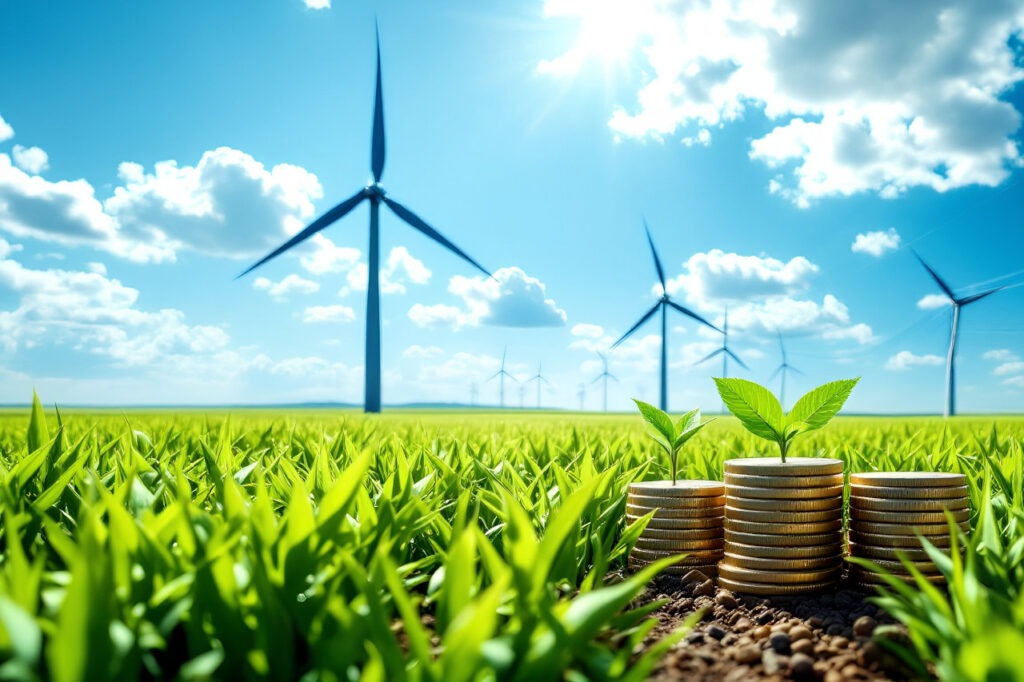Dieser Beitrag ist auch verfügbar auf:
Deutsch
How CO₂ pricing works
CO₂ pricing aims to make the economic value of emissions measurable. Companies that emit CO₂ are charged for their emissions – either through a direct tax or by purchasing emission certificates in an emissions trading system (ETS), in which companies trade emission rights.
CO₂ pricing in practice – CO₂ taxes, CO₂ minimum prices, etc.
- Since 1991, Sweden has been levying a CO₂ tax, which is now around 120 Euros per ton. This measure has already led to a reduction in emissions, particularly in the heating sector. The use of fossil fuels such as heating oil has declined, while the share of biomass and district heating has increased.
- Canada introduced a national CO₂ tax in 2019. Households receive part of the revenue back as social compensation. At the same time, investments in clean energy sources such as wind and solar energy are encouraged.
- The United Kingdom introduced a CO₂ minimum price in 2013. This measure made the operation of coal-fired power plants significantly more expensive. In 2020, for the first time, British electricity came predominantly from renewable sources such as wind and solar.
- Japan has introduced local CO₂ pricing systems in several regions, including Tokyo and Saitama. A central part of Japan’s environmental strategy is the development of hydrogen technologies. Japan is investing in the development of green hydrogen infrastructure to replace fossil fuels, particularly in industry and the transport sector.
2. How carbon credits work
CO₂ certificates are tradable securities that are intended to compensate for the emission of greenhouse gases. One CO₂ certificate corresponds to the avoidance or elimination of one tone of CO₂ or a comparable greenhouse gas. Climate protection projects that reduce emissions or bind CO₂ also generate CO₂ certificates that can be traded on voluntary or regulated markets.
Carbon credits in practice
- Operators of large industrial plants and power plants in Europe must hold carbon credits. If they reduce emissions, they can sell excess credits.
- Projects such as the Kasigau Corridor in Kenya promote reforestation and bind CO₂ from the atmosphere. The resulting carbon credits are then sold.
- In countries such as India and Brazil, carbon credits are generated by investing in wind and solar power plants that replace fossil fuels.
- In countries such as India and Brazil, carbon credits are generated by investing in wind and solar power plants that replace fossil fuels.
3. How emissions trading systems work
An emissions trading system (ETS) is a market-based instrument for reducing greenhouse gas emissions. The government sets a cap on the maximum emissions allowed in a given period and for certain sectors. Carbon credits are issued within this cap. Companies must have enough certificates at the end of each period in order to cover their emissions.
Companies that emit less can sell excess allowances on the market, while those that emit more must buy additional allowances. This creates an economic incentive to reduce emissions by making low-emission technologies and measures more cost-effective. The system therefore (in theory) promotes climate protection without hindering economic growth.
Emissions trading systems in practice
- The EU Emissions Trading System, the largest of its kind in the world, covers around 40% of the EU’s emissions. Since its launch in 2005, emissions in participating sectors, particularly in power generation, have fallen by around 35%. Companies such as RWE and E.ON have gradually replaced their coal-fired power plants with gas-fired power plants and renewable energy.
- California’s cap-and-trade program supports a wide range of climate protection projects, including the development of electric vehicles and the protection of forests. Since the system was launched in 2013, California has steadily reduced its emissions while the economy has continued to grow.
- China’s national emissions trading system, launched in 2021, aims to decarbonize its massive energy sector. Companies such as State Grid and China Southern Power Grid are increasingly investing in solar and wind power plants.
Criticism of both methods is on the rise
Both CO₂ pricing and the trading of carbon credits have been criticized for years. Both methods are generally accused of not reducing actual emissions sufficiently, despite their high level of acceptance. Critics complain that the fixed CO₂ prices are too low to bring about a significant change in behavior among companies and consumers. They also see the danger that wealthier companies could buy their way out of their emissions, while poorer regions and individuals are disproportionately burdened.
Critics also argue that there are loopholes in emissions trading. These can allow companies to formally reduce their emissions without actually changing their production processes. In addition, allowances can originate from dubious carbon offset projects whose contribution to reducing emissions is difficult or impossible to verify.
No energy transition without renewables
Growing criticism suggests that carbon pricing and carbon credits need to be part of a broader set of policies, including the promotion of renewable energy. Renewable energy also requires a robust, flexible electricity grid that can efficiently integrate and distribute renewable energy sources.
An example of such a modern smart grid is the ION Power Grid, which aims to optimize the flow of energy from renewable energies such as wind, solar and hydropower. It also uses blockchain technology to enable direct trading of electricity between private individuals and compensation for feeding energy into the grid that exceeds the capacity of the grid.
In the long term, it is becoming clear that climate change can only be combated through a combination of CO₂ pricing, targeted promotion of renewable energies and innovative technologies.






